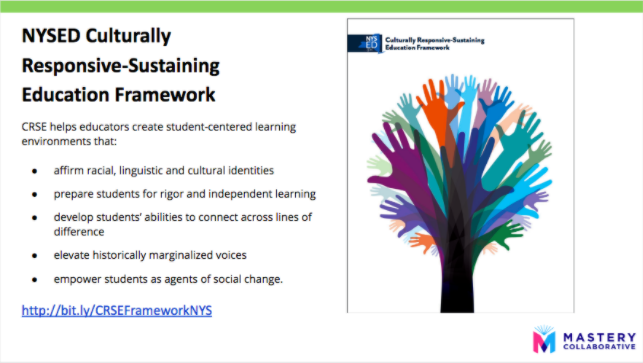Culturally Responsive-Sustaining Education arises out of Dr. Gloria Ladson-Billings’ research with successful teachers of black students. In the mid-1990’s, Dr. Ladson-Billings named three pillars of what she called Culturally Relevant Pedagogy, which remain at the heart of what is today known as Culturally Responsive-Sustaining Education (CRSE).
Academic Success: All students are capable of achieving academic success, and must experience academic success in school. She said, “All students need literacy, numeracy, technological, social, and political skills in order to be active participants in a democracy.“
Cultural Competence: “Having an awareness of one’s own cultural identity and views about difference, and the ability to learn and build on the varying cultural and community norms of students and their families. It is the ability to understand the within-group differences that make each student unique, while celebrating the between-group variations that make our country a tapestry.” (National Education Association. “Why Cultural Competence?” August 27, 2020.)
Critical Consciousness (Socio-Political Consciousness): Dr. Ladson-Billings tells us, “Students must develop a critical (aka sociopolitical) consciousness through which they challenge the status quo of the current social order.” Why is this a necessary aspect of education? Our late, great friend and colleague S. Khalilah Brann: “We can’t make students aware of painful truths and just move on. We need to help them turn awareness into power.”
In 2010, Dr. Geneva Gay brought in the concept of responsive pedagogy, positing that education must be responsive as well as relevant to young people’s racial and cultural identities.
In 2014, Dr. Django Paris and Dr. H. Samy Alim named the necessity to sustain learner’s identities, as well as being relevant and responsive—so we now have the current set of research and practices that known as culturally responsive-sustaining education (CRSE)—all premised on Dr. Ladson-Billings’ original 3 pillars of CRE.
In 2019, the New York State Education Department released a CRSE Framework, which was adopted by New York City Department of Education. http://bit.ly/CRSEFrameworkNYS.


